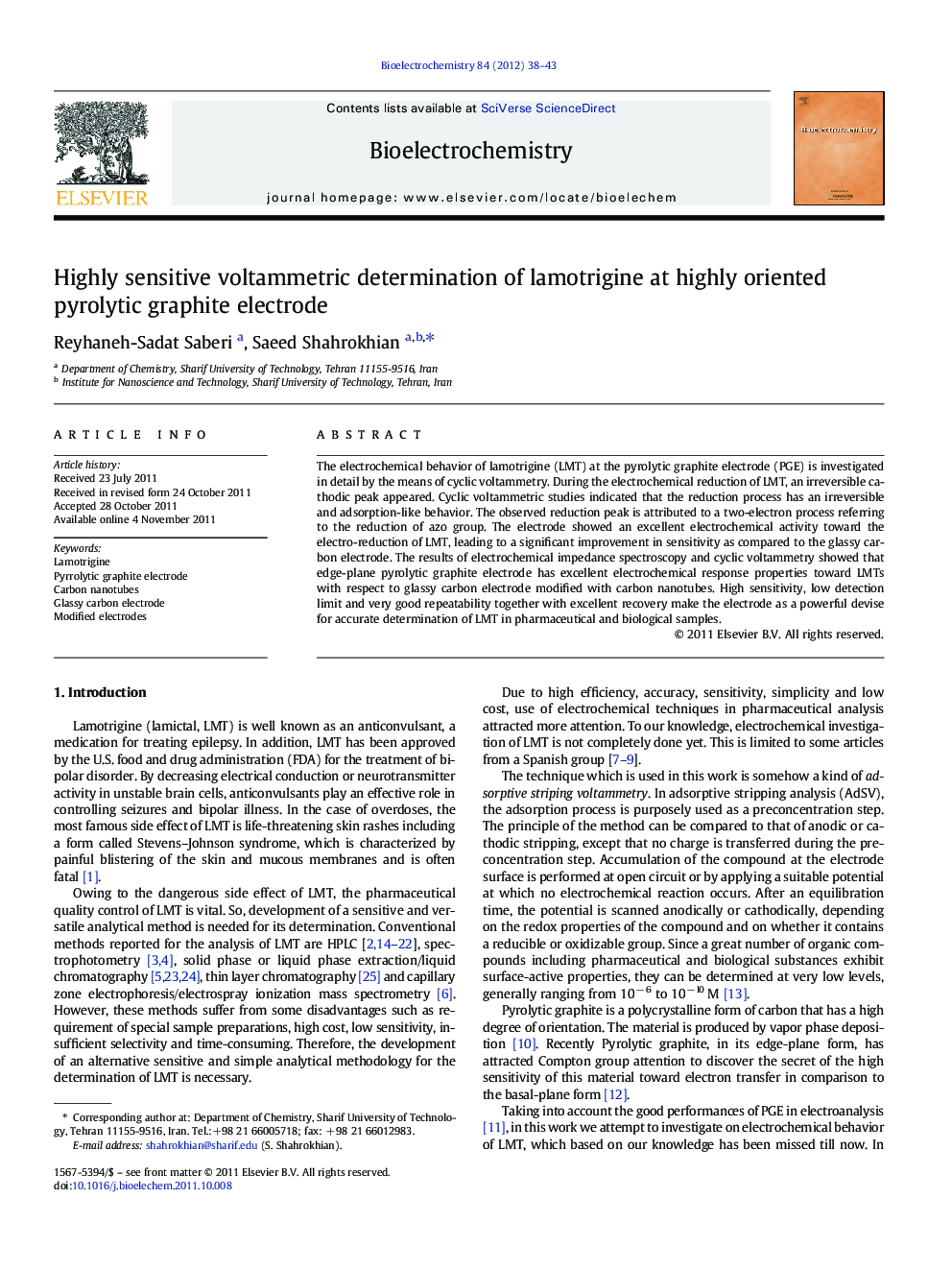| Article ID | Journal | Published Year | Pages | File Type |
|---|---|---|---|---|
| 1271923 | Bioelectrochemistry | 2012 | 6 Pages |
The electrochemical behavior of lamotrigine (LMT) at the pyrolytic graphite electrode (PGE) is investigated in detail by the means of cyclic voltammetry. During the electrochemical reduction of LMT, an irreversible cathodic peak appeared. Cyclic voltammetric studies indicated that the reduction process has an irreversible and adsorption-like behavior. The observed reduction peak is attributed to a two-electron process referring to the reduction of azo group. The electrode showed an excellent electrochemical activity toward the electro-reduction of LMT, leading to a significant improvement in sensitivity as compared to the glassy carbon electrode. The results of electrochemical impedance spectroscopy and cyclic voltammetry showed that edge-plane pyrolytic graphite electrode has excellent electrochemical response properties toward LMTs with respect to glassy carbon electrode modified with carbon nanotubes. High sensitivity, low detection limit and very good repeatability together with excellent recovery make the electrode as a powerful devise for accurate determination of LMT in pharmaceutical and biological samples.
► The electrochemistry of Lamotrigine (LMT) is investigated. ► The mechanism of the electrochemical behavior of LMT is discussed. ► Pyrolytic Graphite electrode showed an excellent option for this study. ► LMT is determined in clinical samples with a low detection limit.
